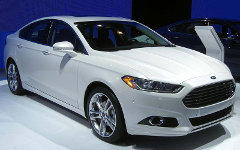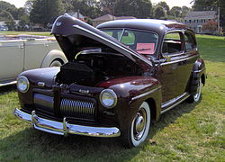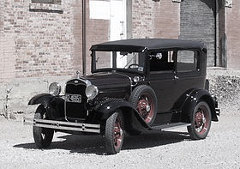Cars and Christian Schools: The Rulebook

New features have revolutionized the experience of driving an automobile. Who would have imagined 30 years ago that a car could guide its driver with verbal, turn-by-turn instructions to get to unfamiliar destinations? What might have been considered science fiction then is now an in-dash feature even on many mass-market cars. Remote entry systems, airbags, backup sensors and cameras, stability control systems, and numerous other advancements in convenience, safety, and comfort have gone from nascent ideas in the minds of inventors to ordinary items on automotive equipment lists.
Certain features are now in such high demand among particular segments of buyers that persuading them to purchase a car lacking those features may be difficult or impossible. Try selling a car without air conditioning in Phoenix! It will eventually sell, but your market of potential buyers will be limited, and you will have to settle for receiving much less for it than could be expected for similar cars equipped with air conditioning. The twofold lesson is that many buyers may be willing and able to pay a higher price for certain features; but without those features they may not be willing to make the purchase at all, at any price.
Discussion
Cars and Christian Schools: Innovation and Imitation

Many Christian parents would like their children to receive both a thoroughly Christian and a rigorously academic (emphasis on both words) education, and don’t see any inherent conflict between these two objectives. This is one reason why Christian schools must distinguish themselves, and be more than simply “not the public schools.”
A case study
As a case study, there is a medium-sized city in the Midwest with three Christian schools, each of which offers grades K-12. School #1 was founded in the late 1970’s, and has less than 50 students. School #2 was founded in the early 1980’s, and has barely more than 50 students. Both of these schools historically struggle to maintain even those enrollment figures. School #3 is of comparatively more recent origin, having been founded in the early 1990’s. It is much larger than the other two schools, with over 350 students. It charges significantly higher tuition than schools #1 or #2, and it shows a pattern of recent, ongoing growth. What makes school #3 apparently prosper, while the other two schools barely stay afloat?
Discussion
Cars and Christian Schools: Time for Model A?

Henry Ford didn’t invent the automobile. Contrary to popular belief, he didn’t invent the moving assembly line process either. What Henry Ford did was unite those two inventions to create the Model T, an affordable, practical automobile that satisfied a burgeoning public demand.
“Success,” it is said, “breeds success,” and soon competitors arose who imitated the methods and strategies of the Ford Motor Company. Offering different styles, features, and capabilities, they reduced Ford’s market dominance—even drawing away some of Ford’s earlier customers. These competitor’s products weren’t necessarily better; sometimes they were simply better suited to the tastes or needs of certain customers.
With its market share dwindling, the company belatedly took action, eventually emerging from its engineering & design studios with the Model A, a more advanced successor to the venerable “Tin Lizzie.” Once again, sales surged.
The period of years from roughly 1965 to 1990 is sometimes considered a sort of “Golden Age” for evangelical Christian schools in the United States. It is said that for a time new schools were opening at the rate of “two a day.”
Discussion
"In many states, voucher programs are helping Christian families, schools turn corners"
Body
“Nineteen states have passed various school choice laws during the 2011/2012 state legislative sessions, helping triple the available funding for vouchers and tax credit scholarships during the past five school years. In Indiana and elsewhere where such programs exist, enrollment in Christian private schools has seen a surge.”



Discussion